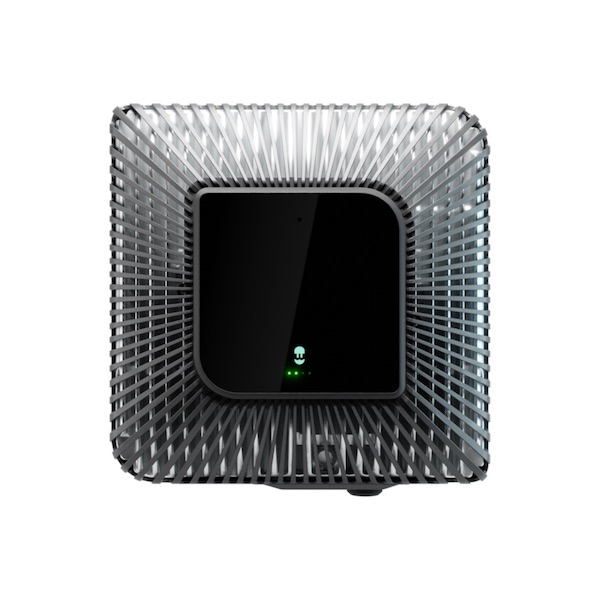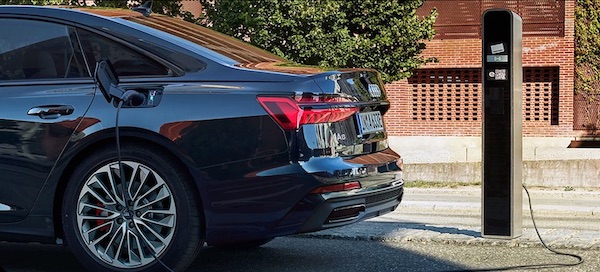Overview
Toyota Motor Corporation, known simply as Toyota, is a leading global automotive company. The company is one of the largest automobile manufacturers in the world and is headquartered in Aichi, Japan. The company has already established an enviable track record for the development and marketing of environment friendly hybrid vehicles.
Toyota has one of the largest portfolios of mild hybrid electric vehicles (MHEVs), currently 11 hybrid models. It is also a world leader in fuel cell electric vehicles (FCEVs). The company currently has a portfolio of the following fully electric and plug-in electric vehicles:
- Toyota Prius Plug-In Hybrid
- The All-Electric Toyota bZ4X
- Toyota Mirai Hydrogen Fuel Cell
- Toyota RAV4 Plug-In Hybrid
Apart from the ubiquitous Toyota brand, the company also owns the Hino, Lexus, Ranz and Daihatsu brands.
Electric Cars: The Basics
For those of you new to zero-emission electric driving, we recommend a read of the following articles:
Sign up to the e-zoomed Electric Living newsletter
The Toyota RAV4 PHEV SUV
The RAV4 is a compact SUV and the first compact crossover from the Japanese manufacturer. It was introduced in 1994. The acronym RAV was derived from ‘Recreational Activity Vehicle’. The plug-in hybrid electric vehicle (PHEV) variant was launched in 2019 at the LA Auto Show. Sales commenced in Japan in 2020.
Despite the RAV4 SUV being launched many decades ago and Toyota’s leadership in hybrid technology, surprisingly the PHEV variant was introduced rather late. Nevertheless, despite the increased competition in the compact SUV segment, the RAV4 plug-in hybrid has much to offer, for both families and company car drivers.
The Toyota plug-in hybrid SUV has a 18.1 kWh onboard EV battery, with a WLTP certified zero-emission electric range up to 46 miles. Both the EV battery size and the claimed emission-free electric range, are above average, when compared to other PHEVs in this segment.
Though the real-world EV range will be lower, possibly closer to 40 miles (emission-free), the EV still has much to offer those keen to save money by driving on electric mode. Depending on the cost of charging, driving an electric car will cost between 5 pence and 10 pence per mile i.e. far cheaper compared to calling on the internal combustion engine (ICE). A 40 miles EV range can be leveraged for both city and motorway driving.
Taking advantage of the EV range will also require inculcating a habit of charging the EV on a regular basis, which again is as easy as charging a smartphone. We at e-zoomed discourage the use of a domestic 3-PIN plug for charging an electric car.
A ‘topping up’ approach to charging will help improve the overall efficiency of the vehicle and also improve the long-term maintenance of the onboard EV battery. Toyota offers a class-leading 10 years or 150,000 miles warranty. The PHEV has a 6.6 kW onboard charger and can be fully charged in 2.5 hours.
Of course, driving regularly on the electric mode will further improve the fuel economy of the electric vehicle i.e. lower motoring costs. The automotive manufacturer claims a fuel economy up to 282.4 mpg, but achieving anything close to this, will require taking advantage of the e-mode! In any case, the PHEV will deliver a better fuel economy, compared to the conventional internal combustion engine (ICE) variant (47 mpg).
In terms of performance, the Toyota RAV4 is decent. The electric vehicle (EV) combines a 2.5-litre hybrid AWD-i petrol engine with an onboard electric motor, powered by the EV battery. Despite the additional weight of the EV battery, the RAV4 SUV PHEV can achieve 0-62 mph in 6.0 seconds.
This performance is not shabby! The Toyota plug-in electric car delivers 306 HP maximum power and 270 Nm torque. Top speed is 111 mph. Of course, on the pure electric mode, the drive is more refined and quieter. The interior cabin is spacious and practical, however, it may not feel as premium as the price tag.
Toyota offers a host of feature and technology, to include: Toyota Touch 2 with Go Navigation, 9″ Toyota Touch 2 multimedia system with smartphone integration (Apple CarPlay & Android Auto), follow-me-home headlights, 7″ multi-information screen, adaptive cruise control, voice recognition switch on steering wheel, reversing camera, pre-collision system with day & night-time pedestrian and cyclist detection, lane departure alert and more.
The all-wheel drive PHEV offers reasonably good headroom and legroom for passengers. The boot space is compromised due to the placement of the onboard EV battery (520 L), but remains useful!
Company-car drivers can take advantage of the lower Benefit-in-Kind (BiK-8%) tax rate for the PHEV, given the lower tailpipe emission of the PHEV (22g CO2/km). The EV does not qualify for the UK government plug-in car grant (PiCG).
Bottom-line, electric driving is good for the environment and the wallet. You can lease electric vehicles (EVs) via e-zoomed at very competitive prices!
| PROS | CONS |
|---|---|
| Larger EV battery compared to other PHEVs | Interior quality has room for improvement |
| Good EV range and cheap to run on electric mode | More expensive compared to some rivals |
| All-wheel drive (AWD) as standard | Onboard charger limited to 6.6 kW |
The Toyota RAV4 PHEV SUV (credit: Toyota)
| At A Glance | |
|---|---|
| EV Type: | Plug-In Hybrid Electric Vehicle (PHEV) |
| Body Type: | SUV |
| Plug-In Car Grant (PiCG): | Not Available |
| Engine: | Petrol-Electric |
| Available In UK: | Yes |
| Variants (2 Options) |
|---|
| Toyota RAV4 Design (from £43,635) |
| Toyota RAV4 Dynamic (from £45,250) |
| EV Battery & Emissions | |
|---|---|
| EV Battery Type: | Lithium-ion |
| EV Battery Capacity: | Available in one battery size: 18.1 kWh |
| Charging: | DC charging not available. Onboard charger: 6.6 kW AC (0% – 100%: 2.5 hours) |
| Charge Port: | Type 2 |
| EV Cable Type: | Type 2 |
| Tailpipe Emissions: | 22g (CO2/km) |
| EV Battery Warranty: | 10 years or 150,000 miles |
| Average Cost Of Residential Charging | |
|---|---|
| Battery net capacity : 8.8 kWh | £1.27 |
| Battery net capacity : 11.6 kWh | £1.67 |
| Battery net capacity : 12.0 kWh | £1.73 |
| Battery net capacity : 13.10 kWh | £1.89 |
| Battery net capacity : 14.10 kWh | £2.03 |
- Note 1: The average cost of residential electricity in the UK varies depending on the region, supplier and type of energy used. An average for the UK is 14.40 p/kWh.
- Note 2: Not all EV manufactures make available the data on net EV battery capacity, and in a number of instances the EV battery capacity advertised, does not state if it is gross or net capacity. In general, usable EV battery capacity is between 85% to 95% of the gross available capacity.
| Charging Times (Overview) | |
|---|---|
| Slow charging AC (3 kW – 3.6 kW): | 6 – 12 hours (dependent on size of EV battery & SOC) |
| Fast charging AC (7 kW – 22 kW): | 3 – 8 hours (dependent on size of EV battery & SoC) |
| Rapid charging AC (43 kW): | 0-80%: 20 mins to 60 mins (dependent on size of EV battery & SoC) |
- Note 1: SoC: state of charge
| Dimensions | |
|---|---|
| Height (mm): | 1690 |
| Width (mm): | 1855 |
| Length (mm): | 4600 |
| Wheelbase (mm): | 2690 |
| Turning Circle (m): | 10.6 |
| Boot Space (L): | 520 |
| 2.5 Petrol Hybrid AWD-i | |
|---|---|
| EV Battery Capacity: | 18.1 kWh |
| Pure Electric Range (WLTP): | 46 miles |
| Electric Energy Consumption (Wh/km): | N/A |
| Fuel Consumption (mpg): | 282.4 |
| Charging: | DC charging not available. Onboard charger: 6.6 kW AC (0% – 100%: 2.5 hours) |
| Top Speed: | 111 mph |
| 0-62 mph: | 6.0 seconds |
| Drive: | All-wheel drive (AWD) |
| Max Power (hp): | 306 (hybrid system output) |
| Torque (Nm): | 270 (hybrid system output) |
| Transmission: | Automatic |
| Seats: | 5 |
| Doors: | 5 |
| Kerb Weight (kg): | 1,930 – 1,995 |
| Colours: | 5 |
| NCAP Safety Rating: | Five-Star |
While e-zoomed uses reasonable efforts to provide accurate and up-to-date information, some of the information provided is gathered from third parties and has not been independently verified by e-zoomed. While the information from the third party sources is believed to be reliable, no warranty, express or implied, is made by e-zoomed regarding the accuracy, adequacy, completeness, legality, reliability or usefulness of any information. This disclaimer applies to both isolated and aggregate uses of this information.








































